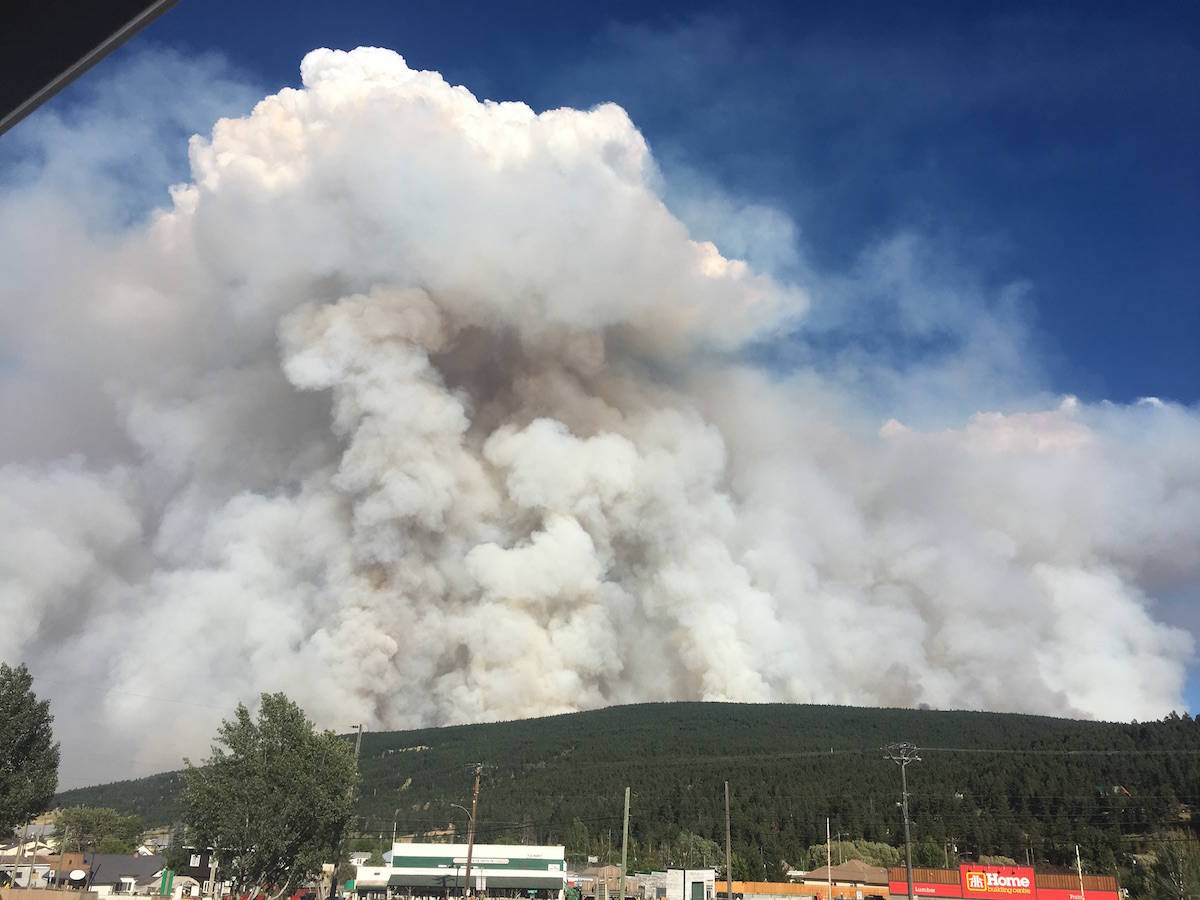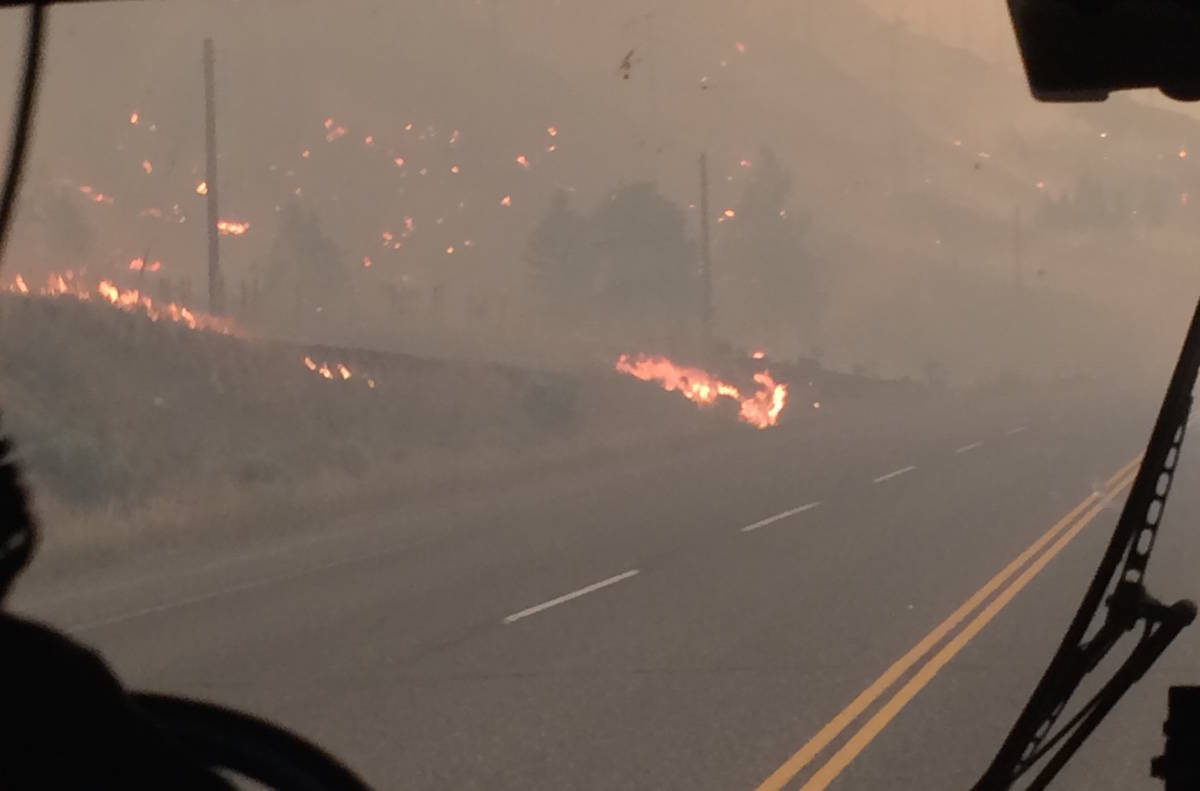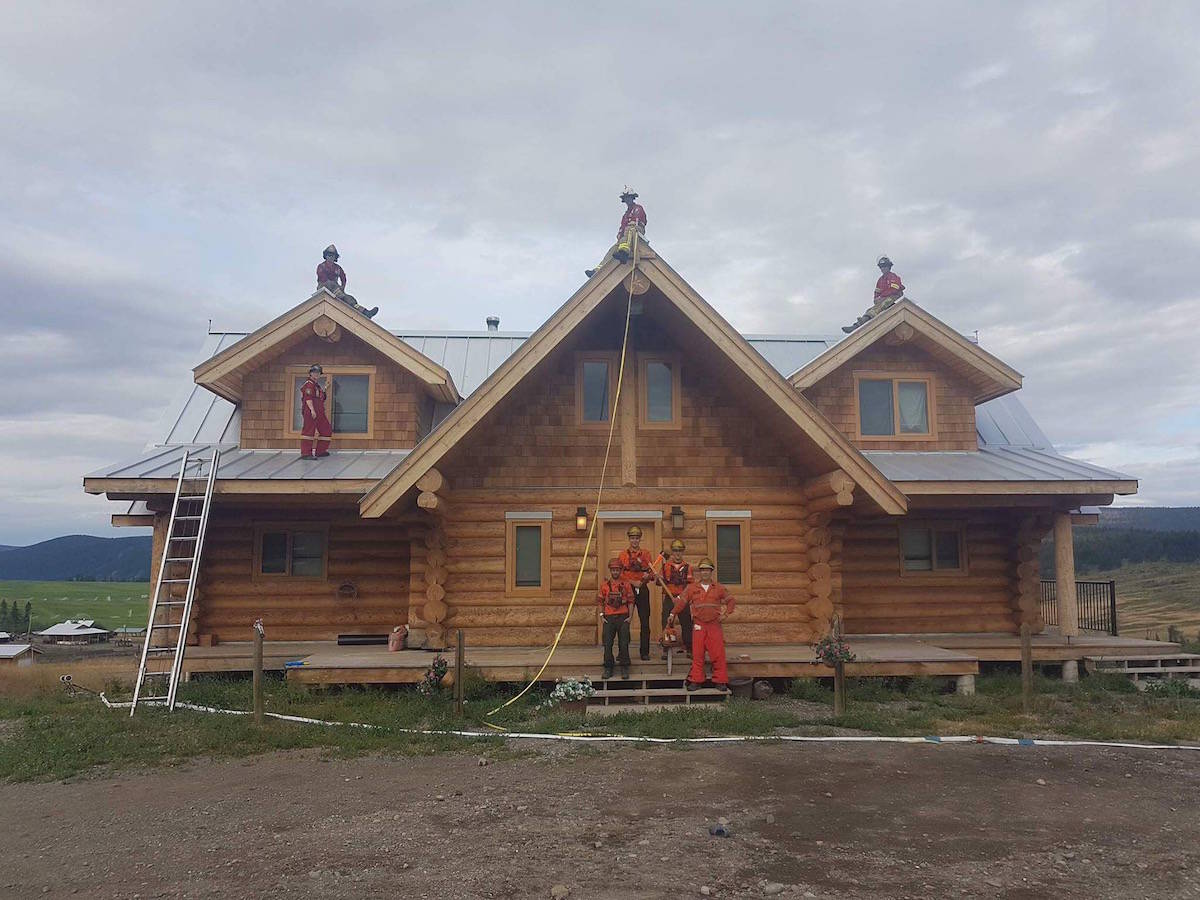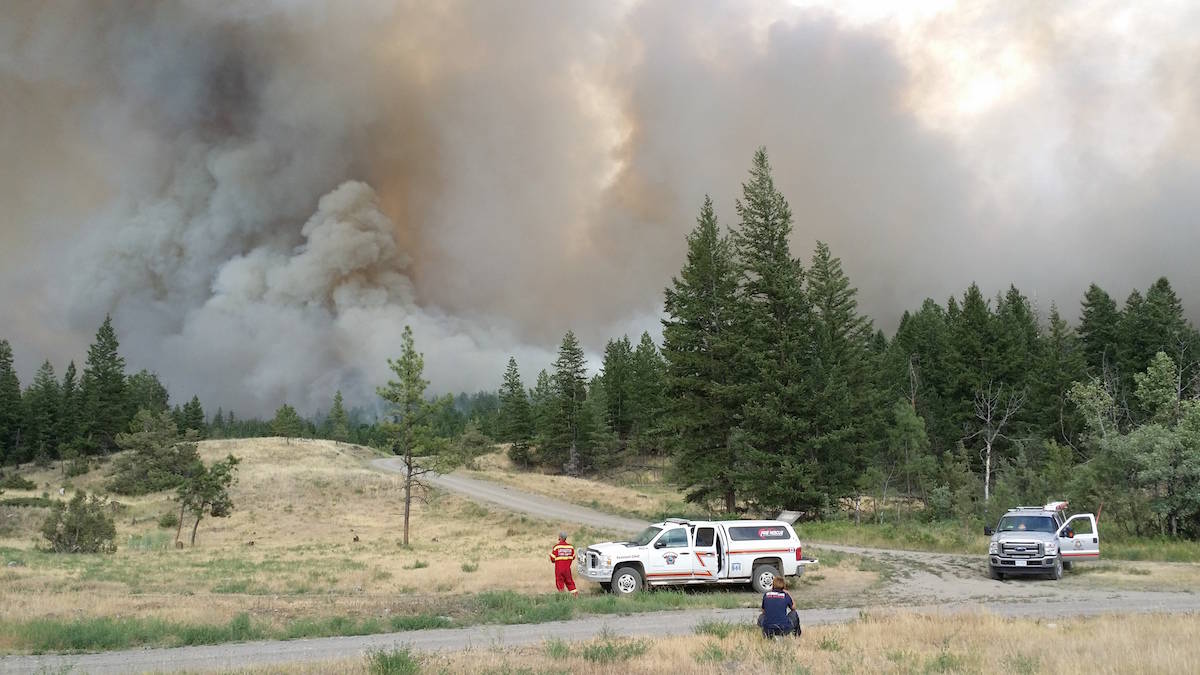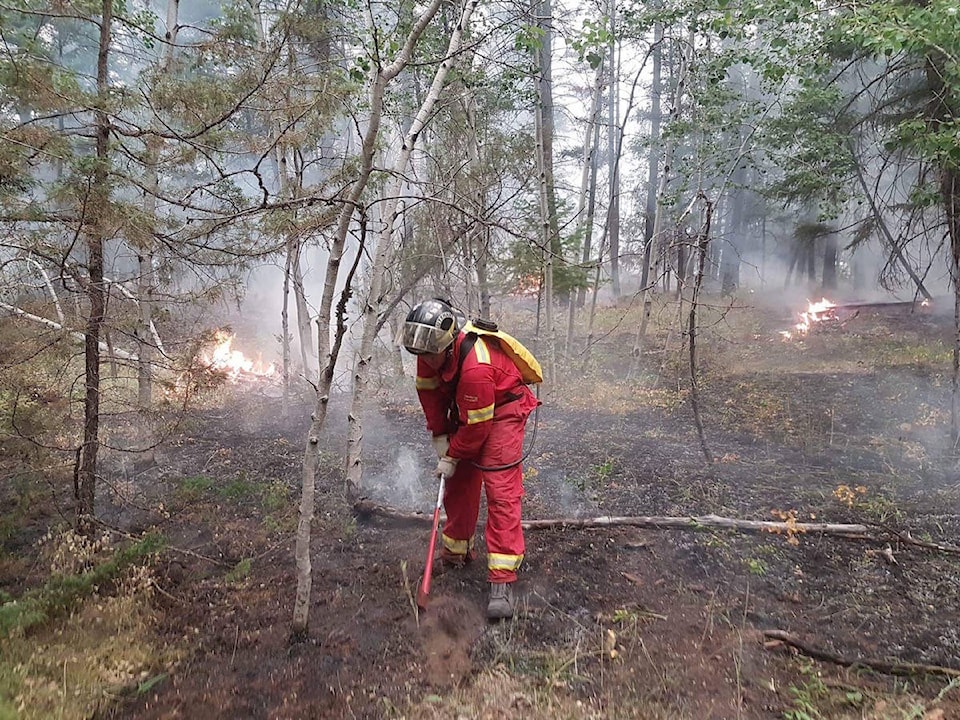Tackling one of B.C. biggest wildfires ever proved a priceless training ground for Clearwater County firefighters.
More than a dozen Clearwater Regional Fire Rescue Services firefighters and a pair from Sylvan Lake Fire Department in five crews rotated in and out of the wildfire front lines for five weeks through July and August.
Fire Chief Steve Debienne said the Central Alberta contingent quickly established themselves as the “go-to teams” as hundreds of firefighters battled the massive wildfires that scorched 1.1 million acres in the B.C. Interior.
“Our crews were asked to quite often deal with some issues that maybe other crews didn’t deal with,” said Debienne.
He puts it down to the level of training and professionalism of his firefighters and the level of confidence the B.C. fire commissioner’s office soon had in their abilities.
Clearwater County firefighters tackled multiple wildfires and were responsible for protecting 2,500 homes. Not a single primary structure was lost on their watch as far as they know.
So effective were the Clearwater County firefighters that Debienne, the assistant fire chief and a captain were asked to to act as structural protection specialists — the only ones from Alberta — by the B.C. fire commissioner’s office.
In that role, they often took to helicopters to locate and assess structures at risk and devise a strategy to protect them.
Terrain, tree (or fuel) types and even demographics are very similar to those found in Clearwater County and the West Country, he said.
Firefighters commented afterwards that the experience and on-the-job training they got could not be matched.
“Not very often do you get that kind of experience,” he said. “It was a crazy fire.”
The scale of the wildfires and the speed they were moving meant it was too dangerous to try to get out in front of them. Instead, firefighters concentrated on setting up protection areas around homes through sprinkler systems, hoses and pumps and allowing the fires to sweep past them.
Using massive amounts of water to raise humidity levels in areas in the path of the fire reduced their destructiveness.
It was readily apparent that homes equipped with some sort of sprinkler system to keep their homes wet were far better off. It is a lesson, among many, that the fire service has brought home.
Debienne also offers a shout out to employers who gave volunteer firefighters the time off to help their neighbours a province away.
“The employers were fantastic to release their staff.”
Since their return firefighters have put their notes together for an after action report that is expected to lead to the development of what will be known as the Clearwater Regional Wildland Urban Interface prgram.
It will adopt strategies that have proven effective in similar programs in B.C. There, structure protection units — essentially trailers full of sprinkler units and related equipment able to protect 20 to 50 buildings — are moved around the province where needed and overseen by specially trained firefighters.
Exactly what shape the Clearwater program will take has not been determined other than that it will be a joint effort.
“We don’t want to do this alone. We want to build a regional area that is strong and can deal with these fires if they come up. When you look at it, they tax your resources very, very quickly.”
pcowley@reddeeradvocate.com
Like us on Facebook and follow us on Twitter
